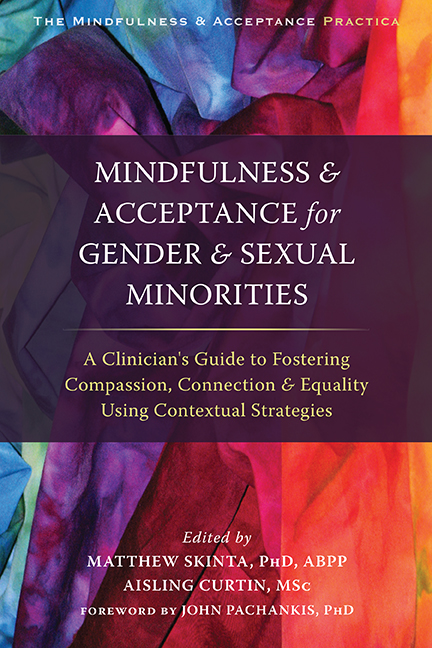Research shows that gender and sexual minorities experience more mental health problems than their heterosexual cis-gender (when assigned sex at birth matches gender identity) counterparts. Here are some best practices that I have found beneficial while working with clients within these communities and for myself as a sexual minority:
Notice, and perhaps confront, your judgments and misconceptions. It may be uncomfortable to admit that you have judgments and misconceptions around sexual orientation and sexual fluidity. These judgments may subconsciously affect your interactions with your client. What would happen if you allowed yourself to notice your judgments and then hold them lightly? For example, it can be helpful to write down your judgments and then ask yourself what story you are buying into about sexual orientation. Ask yourself where the narrative came from. Reflect on what the potential dangers are if you get hooked by this narrative.
Be open to your client’s sexual fluidity. We live in a world that demands labels for everything, everyone, and every sexual orientation. Be aware that if you try to force your client into using a label for their gender or sexuality, this may do more harm than good. As clinicians, it’s easy to do this in subtle, and often well-intentioned, ways. If a client tells us they are in a same-sex relationship, we may assume that they identify as homosexual, or if we hear that a client has had both same-sex and opposite-sex sexual relationships, we may assume that they identify as bisexual. This will be the case for some, but certainly not all. As best you can, get comfortable with not knowing or not having the right term for your clients. Get comfortable with learning new terms you may have never heard of to refer to these communities, as well.

Look out for self-perpetuating traps. Tara Brach wrote about a white tiger, Mohini, who lived the latter years of her life within the National Zoo. Despite being given much larger living quarters than the modest 12-by-12-foot cage that she was initially contained in, she remained within the small corner of her new expansive compound. This, too, can happen with gender and sexual minorities. Most gender and sexual minorities have experienced discrimination and rejection at some point in their lives due to their sexual orientation or gender identity, which can be incredibly painful and traumatic. As a natural response, they do whatever they can to minimize the chances of such discrimination, ostracism, and rejection in the future. It’s important to keep an eye out for when clients are keeping their lives smaller due to either past or present discrimination in their lives. Look for opportunities for your clients to go outside their comfort zone, yet remain within their self-care zone.
Have the courage to connect with your client. As practitioners, we need to have conversations that will help our clients continue to define who they are and who they want to be. This is especially important since it’s very likely that they have friends, co-workers, or family members who are not fully accepting of who they are, and our clients likely have learned to guard the details of their lives. It’s important to be open with your gender or sexual minority client who disconnects to share even the smallest of details about themselves that they may have been rejected for in the past. For the client who over-shares, the clinician will need to be courageous to slow the process down and encourage the client to share less in a connected way.
Let your client know you have their best interests at heart. It is totally natural for your client to be hypervigilant to any possible rejection given the strong historical presence of rejection for many gender and sexual minorities. Therapeutic love is of paramount importance so that our client does not feel blamed for either their past or present circumstances. For example, when you ask the gender or sexual minority client to share in ways that previously led to rejection, it is important that this request is only made in the best interests of bringing the client closer toward who and where they want to be. Communicate this request in a way that conveys genuine warmth and investment in the client. Care and compassion for the client’s best interests can heal deep-seated wounds of rejection and protect them from inadvertently perpetuating negative patterns of the past.
 Aisling Curtin, MSc, is co-editor of Mindfulness and Acceptance for Gender and Sexual Minorities. She is the director of ACT Now Ireland and a registered counselling psychologist with the Psychological Society of Ireland. She lives with her partner in Dublin, Ireland.
Aisling Curtin, MSc, is co-editor of Mindfulness and Acceptance for Gender and Sexual Minorities. She is the director of ACT Now Ireland and a registered counselling psychologist with the Psychological Society of Ireland. She lives with her partner in Dublin, Ireland.
See also: Why Do Transgender Youth Feel So Sad?
Want more tools on mental health and wellness? Sign up for our mailing list.


 2024 Peace Playbook: 3 Tactics to Avoid Clashes with Your Partner
2024 Peace Playbook: 3 Tactics to Avoid Clashes with Your Partner